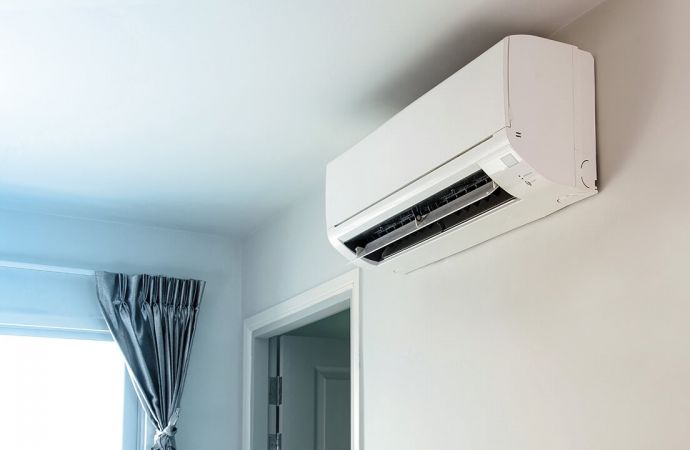Changes to global standard IEC 60335-2-40 would allow increasing the amount of R290 under specified circumstances; votes due by October 30.

An International Electrotechnical Commission (IEC) working group has released a proposal to update the safety standard (IEC 60335-2-40) for room air-conditioning (AC) systems, heat pumps and dehumidifiers, which would allow larger amounts of flammable refrigerants like propane (R290) around the world.
The proposal (61D/455/CDV) was released on August 7; member countries represented on the IEC’s sub-committee 61D will have until October 30 to vote on the proposal. It includes changes for charge limits of A3 (flammable), A2 (low flammable) and A2L (lower flammable) refrigerants.
The Environmental Investigation Agency (EIA), in both its Washington, D.C., and London offices, is urging adoption of the proposed safety standard.
“We have been working on [the 61D/455/CDV proposal] since 2015,” said Asbjørn Vonsild, head of Vejle, Denmark-based Vonsild Consulting, and convener of the working group behind the proposal. If the 61D/CDV proposal passes, then it “will be published in the 7th edition of IEC 60335-2-40 by end of 2021,” he added.
However, after the revised IEC 60553-2-40 standard is published, regional and national standards bodies would need to adopt it before it could take effect in those markets.
Vonsild noted that the 61D/455/CDV proposal to increase the charge limits for flammable refrigerants is one of multiple proposals for the IEC 60335-2-40 standard. Another one is proposal 61D/457/CDV on gas detectors for detecting leaks in systems with flammable refrigerants.
Means for increasing charge
Vonsild explained that the maximum hydrocarbon charge in a very large room is not being changed in the proposal, and for hydrocarbons in indoor appliances it is still around 1kg (2.2lbs) per circuit. “What is being changed is the amount that can be used in an ordinary size room,” he said.
Under the proposal, Vonsild noted, the primary means for increasing the amount of hydrocarbon refrigerant that can be used are circulation airflow, safety shut-off valves, and additional construction requirements “for a robust design.”
For example, in a 20m2 (215ft2) room with a 2.2m (7.2ft) ceiling height, a ceiling mounted unit today is allowed 334g (0.7lbs) of R290. “With the proposal, the charge limit will become more complex than previously to take additional safety measures into account,” he said. For this room the R290 limits would be:
- 334g for a standard split system.
- 585g (1.3lbs) with additional construction requirements for a robust design.
- 836g (1.8lbs) with sufficient airflow (which may require a gas detector to ensure detection of leaks). “The amount of airflow available would determine the charge limit, Vonsild noted. “Additional construction requirements for a robust design can be applied to reduce the required airflow.”
- 988g (2.2lbs) if safety shut-off valves are employed to ensure that the amount of R290 leaked is less than the above limits.
Vonsild observed that the 61D/455/CDV proposal is expected to pass, “as it includes improvements to many other aspects,” including:
- It enables easier design for flammable refrigerants, for instance via revised requirements for avoiding arcs and sparks from electric components and hot surfaces.
- It increases charge limits for A2L refrigerants in some circumstances.
- It includes a number of improvements to non-refrigerant related aspects.
Helpful to Kigali implementation
In a statement, EIA strongly urged Montreal Protocol stakeholders to take note of the current voting period for proposal 61D/455/CDV “and ensure support for its rapid advancement and finalization.”
“The adoption of a revised safety standard to allow flammable refrigerants in room air-conditioning is vital for meeting climate targets and implementing agreements to phase down HFCs, such as the Kigali Amendment under the Montreal Protocol,” said Clare Perry, EIA’s U.K. Climate Campaign Leader.
“Climate-friendly hydrocarbon refrigerants have been safely used in billions of household refrigerators around the world for decades, but have been largely blocked in air conditioning by outdated standards,” added Christina Starr, Senior Climate Policy Analyst in EIA’s Washington. D.C., office, and a member of the U.S. standards technical panel for air conditioners, UL 60335-2-40. “It is incredibly important for countries to support this proposal to unlock the full climate benefits of reducing HFCs and increasing energy efficiency in cooling.”
Moreover, Starr noted, “many countries, particularly in the Global South that are A5 Parties [developing countries] to the Montreal Protocol, are in the process of phasing out ozone-depleting refrigerants, hydrochlorofluorocarbons. An updated standard that allows safe use of climate-friendly refrigerants will enable early action by these countries to “leapfrog” super pollutant HFCs and transition directly to better substitutes for air conditioning.”
The global stock of room air conditioners is expected to triple to 5.6 billion units by 2050, according to the Paris-based International Energy Agency (IEA). But switching domestic air-conditioners between 2025 and 2050 on a global basis “from climate-harming refrigerant gases to propane could prevent harmful emissions equal to 1,400 coal-fired power stations running for a year,” according to EIA’s website. This equates to avoiding 5.6 billion metric tons of CO2e emissions.
The EIA is also is urging a ban on HFCs in split-system air conditioners and promoting propane (R290) as a viable alternative – changes it is trying to get incorporated into the European Union’s F-Gas Regulation, currently under review.
What is being changed is the amount that can be used in an ordinary size room."
– Asbjørn Vonslid, Vonslid Consulting
Related stories



